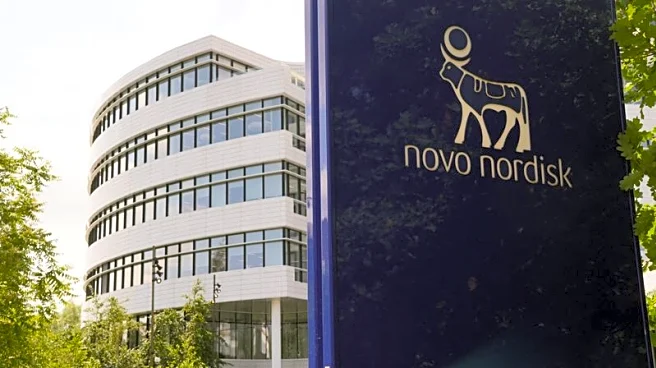What's Happening?
BioMed X, a biomedical research institute, has announced a collaboration with Novo Nordisk to tackle challenges in oral peptide drug delivery. The partnership aims to develop innovative oral formulations for peptide drugs, such as GLP-1 receptor agonists, through BioMed X's global talent sourcing and incubation model. The project, titled 'Prolonged Retention of Oral Peptide Formulations in the Gut,' will focus on creating technologies that enhance the absorption and bioavailability of peptide-based therapeutics. Despite advances in biomedical research, conventional oral peptide formulations face limitations due to low intestinal permeability and rapid gastrointestinal transit. The collaboration seeks to address these issues by developing technologies that ensure prolonged retention of dosage forms in the lower small intestine, improving patient compliance and therapeutic efficacy.
Why It's Important?
This collaboration is crucial as it addresses a significant challenge in drug development: the efficient oral delivery of therapeutic peptides. Peptide drugs, such as GLP-1 receptor agonists, are important in treating chronic diseases, but their oral delivery is hindered by low absorption rates. By developing technologies that improve the bioavailability of these drugs, the partnership could lead to more effective treatments and better patient outcomes. The success of this initiative could also pave the way for further innovations in drug delivery systems, potentially transforming the pharmaceutical industry and enhancing the accessibility of peptide-based therapies.
What's Next?
Researchers interested in joining the project are invited to submit proposals to BioMed X by October 12, 2025. As the collaboration progresses, there may be significant advancements in oral peptide drug delivery technologies, potentially leading to new products and treatment options. Novo Nordisk and BioMed X will likely continue to explore other areas of innovation in drug delivery, leveraging their combined expertise to push the boundaries of scientific research. The outcomes of this collaboration could influence future drug development strategies and encourage other pharmaceutical companies to invest in similar initiatives.












